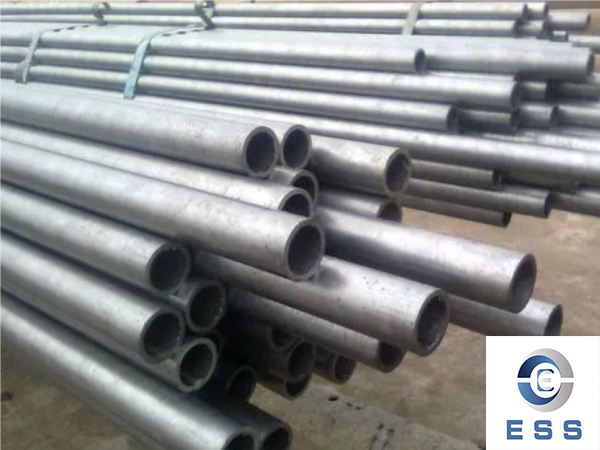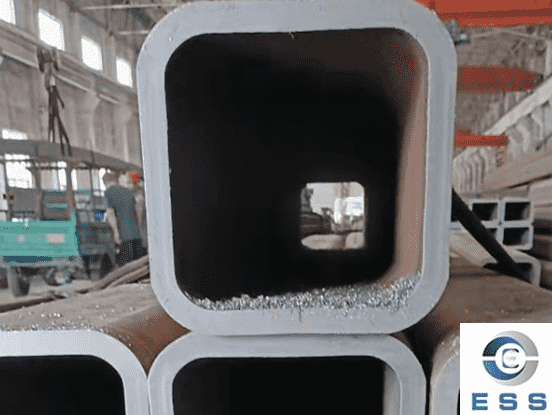How to use seamless hydraulic pipe correctly?
Hydraulic pipe is one type of seamless steel pipe. Steel pipes are divided into two categories: seamless steel pipes and welded steel pipes according to different production processes. Seamless steel pipe is a seamless steel pipe made of perforated steel ingots, tube blanks or steel rods.

Advantages of hydraulics
Compared with mechanical transmission and electrical transmission, hydraulic transmission has the following advantages:
1. Various components of hydraulic transmission can be arranged conveniently and quickly according to needs.
2. Light weight, small size, small movement inertia and fast response speed.
3. It is easy to operate and control, and can perform stepless speed adjustment in a wide range (speed adjustment range up to 2000:1)
4. Overload protection will be automatically implemented when overloaded
5. Mineral oil is generally used as the working medium, which will self-lubricate the moving surface and has a long service life.
6. Easy to achieve linear motion
7. It is easy to realize the automation of the machine. Once electro-hydraulic joint control is used, not only a higher degree of automatic control process can be achieved, but also remote control can be achieved.
Disadvantages of hydraulics
1. Because the resistance and leakage of fluid flow are difficult to control, the efficiency is low and may pollute the environment in severe cases.
2. It is easily affected by temperature changes during work, so it cannot work under very high or very low temperature conditions.
3. The manufacturing precision of hydraulic components is relatively high, so the price is relatively expensive.
4. Due to the leakage and compressibility of the liquid medium, a strict transmission ratio cannot be obtained.
5. When the hydraulic transmission fails, it is not easy to intuitively find out the cause; therefore, maintenance and repair costs are high.
Precautions for pipeline installation
All steel pipes need to be pickled before installation, especially the steel pipes connected to the ferrule-type pipe joints, and then the ferrules are pre-tightened to the pipe ends;
Before installing all pipe joints, the O-rings inside should be taken out and cleaned before use. The sealing rings should be put in place when they are officially installed.
During construction, keep the oil ports, pipe joints, pipe ends and other openings of pumps, distributors and other equipment clean to prevent water, dust and other foreign matter from entering;
The pipelines are laid in a free state, and the welded pipelines cannot be forcibly fixed and connected by applying excessive radial force;
The oil hole of the bearing seat must be checked in advance to see whether the internal oil circuit is smooth and whether the oil port thread matches the joint.
Five major types of hydraulic pipe failure
1. Incorrect installation and assembly: Using inappropriate assembly (such as connectors) and incorrect installation will cause the hydraulic pipe to fail.
2. Wear (flattening) of the outer layer: Corroded surface will also affect the operating performance of the hydraulic pipe.
3. Improper operation of the instrument: it will cause the hydraulic pipe to fail frequently, and the instrument must be tested to prevent machine failure.
4. Improper operation of the hydraulic pipe: incorrect installation and aging of the hydraulic pipe will cause the hydraulic pipe to fail.
5. Incorrect usage (use of inappropriate hydraulic pipes): Using incorrect hydraulic pipes can also cause pressure pipe failure.
Pipeline cleaning
In order to ensure the cleanliness of the lubrication system and supply clean grease to the mechanical equipment bearings, the pre-installed pipelines must be removed and cleaned. There are two types of cleaning: kerosene cleaning and pickling.
(1) Kerosene cleaning objects and methods
Kerosene cleaning objects: copper pipes and stainless steel pipes;
Kerosene cleaning method:
1. Steel pipes that have been pickled before pre-installation and have no rust or oxide scale on the inner wall;
2. Pipe joints dirty during pre-assembly;
3. Remove the pipes and joints that need to be cleaned. Use a cloth (or lint-free yarn) dipped in kerosene to clean the inside of the pipe. Soak both ends and joints in kerosene for cleaning. Then apply engine oil or fill the pipe with grease. Sealed and ready for installation;
4. There should be no visible contaminants (such as iron filings, fibrous impurities, welding slag, etc.) after cleaning. Pay special attention to the fact that the welding slag on the inner wall of the welding joint must be thoroughly cleaned.
(2) Pickling objects and methods
Pickling objects: steel pipes that have not been pickled before pre-installation; steel pipes that have been pickled but are now severely rusted.
Pickling method:
1. Use degreasing agent to remove the grease adhered to the pipes;
2. Use clean water to remove dirt on the pipe;
3. Remove rust spots, rolling iron filings, etc. on the pipe wall in the pickling solution;
4. Use clean water to flush the attachments generated during the above operations, and flush the inside of the pipe with high-pressure water;
5. Use alkali solution to neutralize the remaining acid on the pipe;
6. In order to dry effectively, the pipe should be immersed in hot water or steam dried, and the pipe should be completely dry;
7. Check the pickled pipes to see if they are clean;
8. Immediately after pickling, seal the opening of the pipe with plastic or plastic tape to prevent the intrusion of foreign matter, moisture, etc.













 Eastern Steel Manufacturing Co.,Ltd not only improve product production and sales services, but also provide additional value-added services. As long as you need, we can complete your specific needs together.
Eastern Steel Manufacturing Co.,Ltd not only improve product production and sales services, but also provide additional value-added services. As long as you need, we can complete your specific needs together.










